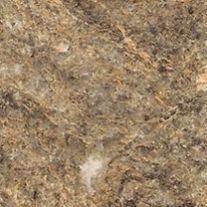.png)
Schedule Your FREE
In-Home Estimate Today!
Call NOW
800-645-3579

614-471-0278 Office
3040 Switzer Ave.
Columbus, Oh 43219
Your countertops go through a lot. Scratches, stains and the stresses of everyday life. No other surface on the market offers such a perfect harmony of performance and beauty. Only quartz can meet both the needs of your lifestyle and the demands of your inspiration. Beauty endures with quartz. Quartz surfaces are usually 93% pure quartz. Granite typically only contains 40–60% quartz, along with more porous, weaker minerals. That’s why granite is more susceptible to damage. Quartz’s durability also means you can be more creative with it.
Draw daring edge shapes with wider overhangs to create a kitchen like no other. Quartz is made for those who truly love to cook. Because it's nonporous and nonabsorbent, it won't draw in moisture from raw or leftover food, which can harbor harmful bacteria. It gives off zero emissions, and no radon. There is no safer stone surface for food preparation, period. Just use warm water and mild soap to clean. Unlike granite and marble, quartz doesn’t need periodic sealing, polishing or reconditioning. You won’t have to work with messy oils or dangerous chemicals—there’s no cost of upkeep for quartz once it’s installed.
Granite has a rich beauty that few other countertop materials can match. It is a natural product with a timeless aura and appeal. Granite countertops take a high-quality kitchen to the next level visually and often become the centerpiece of the room. With more than 20 shades of granite to work with, you’ll find one that blends perfectly with your kitchen cabinets, flooring and walls.
Granite is a very hard substance and is not susceptible to scratches. While not ideal to work on because it will dull knife blades, it will take normal wear and tear very well. Granite resists heat too, so its use near a range or cooktop is ideal. When you have to set down a hot pan fast, granite can take the heat without being damaged or weakened. In the bathroom, placing a hair tool on it that is still warm won’t be a problem.
Granite can be very resistant to stains and won’t absorb liquids when it is properly sealed. A good professional installer will be able to seal it correctly so that it maintains its attractive good looks indefinitely, or you can do it yourself.
Laminates are made with layers of paper, including a decorative layer, and melamine resin. Generally, the thicker the product, the more durable and costly it’ll be. Higher-end laminates offer 10-year warranties. Fancy edge treatments — beveling, ogees, and bullnose — kick up the costs, too. In the past, laminate kitchen countertops looked like poor copies of materials, such as wood and stone, because reproduction qualities were poor, and the finished product depended on a repeating pattern about 18 inches wide. Today, advanced photographic technology creates laminates that look more like the real thing, and unique patterns can be up to 5 feet wide — wide enough to create an entire “granite” kitchen island with no repeating pattern. Also these days, laminates are made with some percentage of recycled materials, such as FSC-certified wood — wood that’s harvested sustainably.








